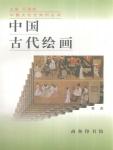Chapter 1 Chapter 1 Original Painting
In recent years, a large number of petroglyphs have been found in my country.Such as the rock paintings of Yinshan in Inner Mongolia, Jiangjunya in Lianyungang, Jiangsu, Huashan in Guangxi, Cangyuan in Yunnan, Gangcha County in Qinghai, and rock paintings in Fujian, Xinjiang, Ningxia and other places.According to the identification of archaeologists, many of these petroglyphs were created by people in the Neolithic Age.Among them, the petroglyphs in the Langshan area of Inner Mongolia are the most numerous, widely distributed, and longest-lasting.The earliest one is about 10,000 years ago.
Langshan is located in the western section of Yinshan Mountains in Inner Mongolia, with high peaks and deep valleys in the mountains, and vast plains outside the mountains. It is a place where ancient nomads lived and multiplied.Thousands of petroglyphs have been carved on the 300-kilometer-long cliffs.Most of these petroglyphs were chiseled or carved with hard stone or stone tools, and the contour grooves are as deep as three centimeters.Most of the performances are related to the hunting life of primitive tribes.For example, the "Hunting Picture" found in Tuolingou, the junction of Deng Dengkou County and Alxa Left Banner, is 60 cm high and 70 cm wide.A hunter was drawing his bow to shoot, surrounded by deer, sheep, tiger and other animals.Below the picture are a goat and a tiger-like beast.The goat's triangular head and big curved horns are vividly depicted.There is also a lamb that is sucking milk under its belly, lifting its front legs and stretching its neck, which is very interesting.
Another example is the "Dancing Picture" on the stone wall in the middle section of Tuolingou, which is 73 centimeters high and 61 centimeters wide.In the middle of the painting, four people hold hands and dance, surrounded by many people and animals.The dancers all stretched their arms, wore long tail ornaments, and stepped to the same beat, creating a cheerful and enthusiastic atmosphere.
At that time, people carved pictures on the hard stone walls, not only for appreciation, but also for recording events or worshiping gods.According to the investigation of relevant scholars, the location and stone quality of the chiseled petroglyphs are carefully selected, and the subject matter is also closely related to the selected location. "For example, images of human beings and gods are mostly carved in deep valleys; dancing images are mostly carved on the walls of the ditch; animal images are mostly carved on the rocks at or near the top of the mountain. Perhaps, these are all related to people's lives at that time. Circumstances matter, the valleys are deep and suitable for sacrifices; the valleys are open and easy for dancing; the peaks of the mountains are places where wild animals come and go. The paintings are chiseled according to local associations.” These conditions help us think and understand the content of rock paintings. .
A group of petroglyphs on the arc-shaped boulders at the south entrance of Jiangjunya in Lianyungang, Jiangsu Province, show the concept of interdependence between primitive people and plants.The whole painting consists of 10 human face plants of different sizes, the big one is 90 centimeters high, and the small one is 18 centimeters high.Lianyungang is located on the southeast coast, where the Dongyi Shaohao clan lived in ancient times. According to history books, "the soil is vast and barren, the fields are not cleared, and the rice and millet are not abundant." The reason why ancient ancestors chiseled these human-like The plant-like figure is probably a sacrifice to the god in charge of grain growth!Because primitive people believed that animals, plants, rivers, mountains and rivers were all alive like human beings.These anthropomorphic figures are drawn with a mysterious power to influence the course of nature.Therefore, in order to survive, they still unremittingly chiseled rocks under the conditions of extremely simple tools, hoping to obtain a good harvest of grain through such behavior.
From an artistic point of view, these rock paintings are simple, childish and rough, very similar to the images drawn by children. They not only describe what they see, but also directly express what they think, which is quite natural and innocent.

